Back in mid-April, I taught a photography workshop in Great Smoky Mountains National Park. While I like all the locations that I do photo workshops in, if I had to pick one national park it would be the Smokies. The waterfalls, views of ridges stacked one upon the other, and the collection of historic buildings in the park make it perfect for exploration. The woods there also feel inviting and welcoming, and the bio-diversity is unmatched by any other national park.
I’ve been going to the Smokies since 1996, which is the year I hiked through it when I was thru-hiking the Appalachian Trail. There was something about the Smokies that I fell in love with on that hike. I returned for a number of years every spring to go backpacking. I put 100s of miles on my hiking boots backpacking all over that park.
The Smokies are also where I ran my first destination photography workshop. I figured that since I knew the park so well from backpacking there that it would make a lot of sense to run my first destination workshop there. Now I’ve run a dozen or so workshops there, and I’ve spent well over 200 days in the park. Even though I’ve spent that much time there I love going back.
After all these years teaching photo workshops there, I’ve found that Midwesterners often have a hard time photographing the park. In the Midwest, our sunrises and sunsets are often shot with wide angle lenses and our waterfalls with telephoto lenses. In much of the Midwest, we have more open views. The Smokies, much like the northern forests of Minnesota, are covered with trees. The tops of the mountains are even the same biome as northern Minnesota. So, the Smokies aren’t often what people expect, and they have to completely rethink how they photograph landscapes.
I think that’s a good experience because it forces you to break out of your habits.
Even though I suggest a telephoto for sunrises and sunsets, it often takes a day or two before participants grasp that they need to pick out a ridgeline in the foreground and then stack the rest of them behind. I help, of course, in the early days until they grasp the concept. In these cases, a telephoto lens makes the ridges seem closer to each other than they really are.
One of the downsides to the park is that the best overlooks for sunrise and sunset aren’t plentiful, which is unlike the nearby Blue Ridge Parkway. The Blue Ridge offers views of sunrise and sunsets all over. But in the Smokies, it’s mainly six to twelve or so spots depending on how direct of a view of the sun you want.
On this workshop, we sort of struck out at sunset on our first day at an overlook near Gatlinburg. Our second day had brutal 40mph+ winds with temps around freezing, so we didn’t go up to Kuwohi and would have had to repeat our first day’s overlook. Instead of doing that, we dropped down the mountain a bit to a different pullout that I’ve always wanted to try at sunset but never had. I let the group know that, and they were game.
There you don’t get a view of the sun disk, but with the conditions that we had and dust in the air from the wind, the warmth of sunset filled the valley. I’m glad that warmth filled the valley, because it didn’t reach us. We froze while getting shots from there.
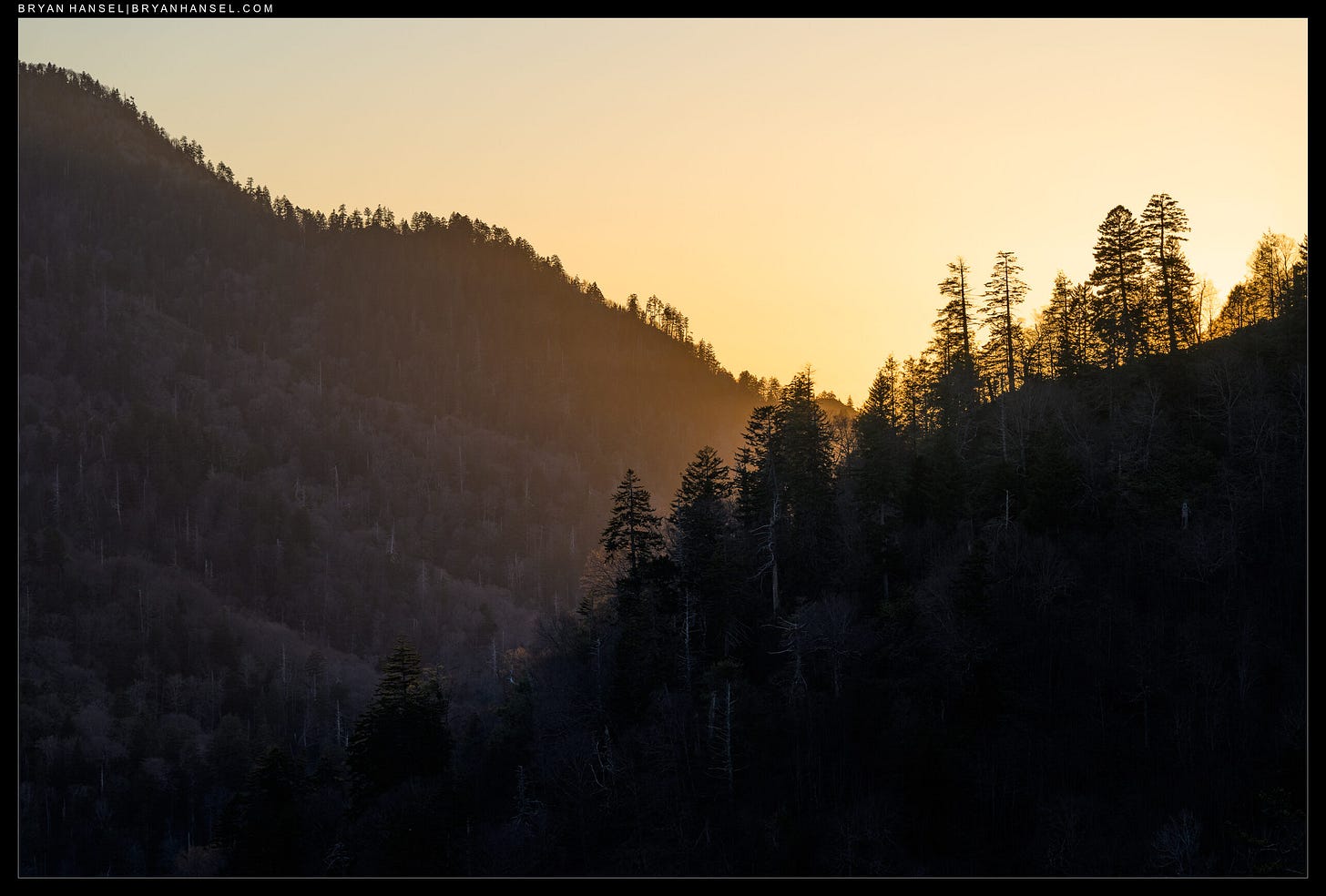
One of the things that I love about workshops is that as I get to check in with participants I also get to see what they are shooting. One of the participants was shooting the following waterfall through the trees. I almost always like to get a clear view of waterfalls and include very little extra. But his shots inspired me to try to make a shot through the trees. I love the shot that I got.
The Smokies offer a lot of different waterfalls and streams to photograph. If you’re a waterfall lover, you’re going to love the streams. When I’m there on my own, I can spend an entire day photographing 100 or 200 yards of a stream. There’s so much to photograph. The best part is that in spring, the greens glow.
There are also old log cabins in the park to photograph. One of my favorites is in Cades Cove. It’s the John Oliver house. In the spring, there’s a flowering dogwood right behind it that when timed right makes the house pop.
The exact timing you need is hard. You want to green on the trees, but you don’t want too much green on the dogwoods. If the dogwoods get too green, the green starts to hide the white flowers.
This workshop aligned about as perfectly as you can get with the dogwood at the John Oliver cabin.
Most of the participants on my landscape workshops haven’t shot buildings before. If you haven’t a good trick is to show two sides of the house and get good morning or evening light on one of those sides. That’s always a teaching moment for me to use at the cabins. You also want to keep your camera relatively level so that the sides of the cabin are straight (or fix them in processing).
At another cabin, we started to shoot the camera from fully extended tripods held above our heads. I can’t remember how or why we started doing that, but I do like the results. It’s an almost drone-like perspective.
In Cades Cove there are also lots of beautiful locations for landscape shots, but one of the best spots for a sunrise is a gravel road. You need blue sky or a crack in the clouds on the eastern horizon to make it work. As the trees catch the golden morning sunlight, the gravel stays in shadow to provide a color contrast.
I’ve shot it a number of times, but I still love being there and shooting it in the morning. It’s funny that I’ve always been fixated by this spot that I haven’t checked out the spot for sunrise just down the street from this location. I ran into another workshop instructor on this morning and asked him if he had shot the other spot. He had and said it was really good. Even after all my time in the park, I’m still missing other good spots due to my blinders of beauty already seen and the desire to re-witness it.
That’s something that I love about the Smokies; I’m always discovering something new or a new way to see things there.
Until next time
That’s a wrap of my time in the Smokies this year. I don’t have a workshop scheduled for 2026 in the Smokies, but I’d consider one in 2027 if there’s interest. Speaking of my workshops, registration is now open here: https://www.bryanhansel.com/services/photography-workshops-and-photography-courses/. It’s always interesting to see what workshops fill quickly. This year nothing sold out completely during opening registration week. That’s different than past years. Instead everything filled more evenly even my winter workshop which usually doesn’t get many registration until later in the year. Most of my 2026 workshops still have a couple of spaces open.
I hope you enjoyed this virtual journey to the Smokies, and I’ll see you again in two weeks.

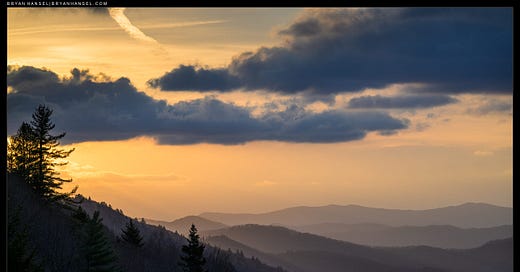


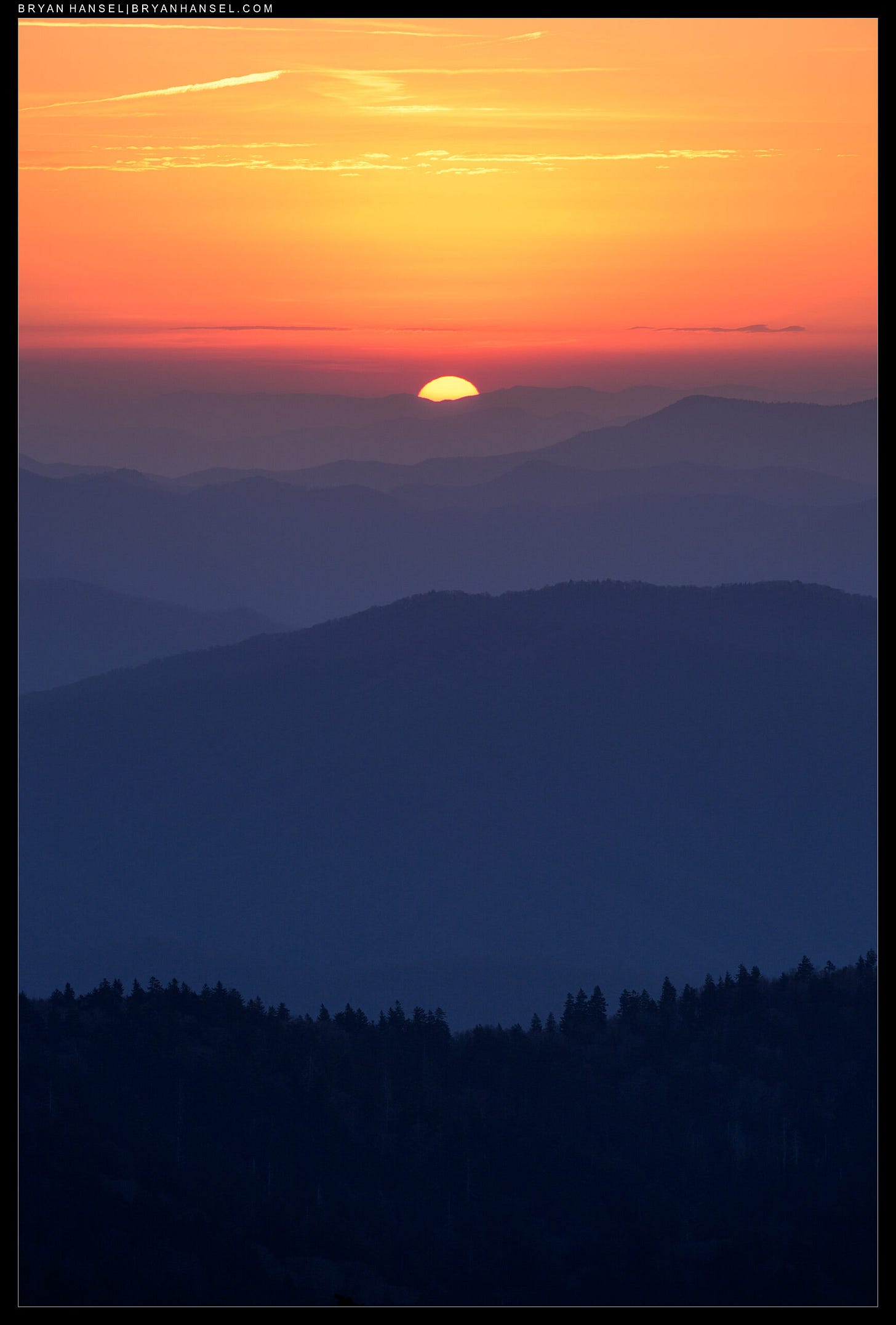
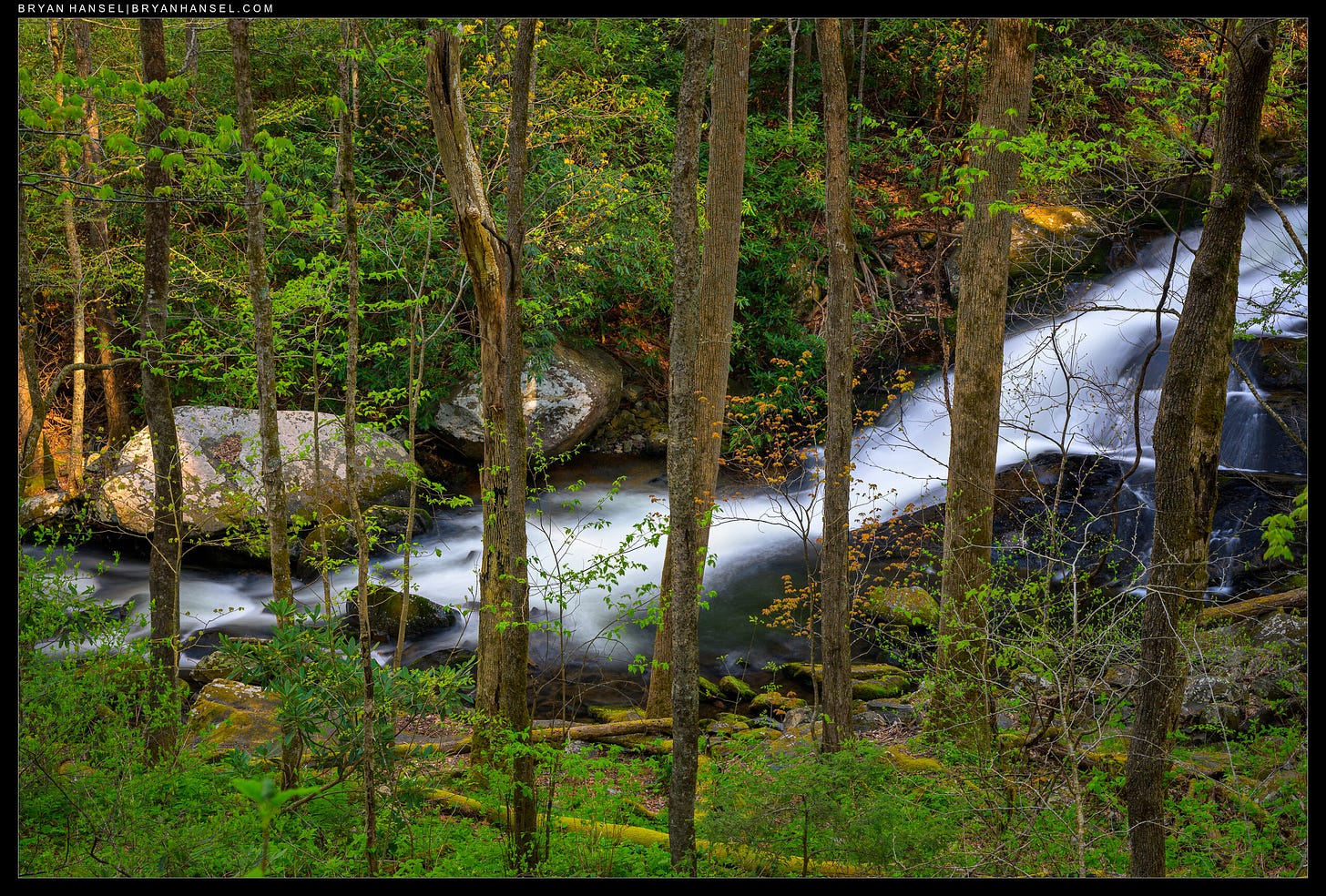

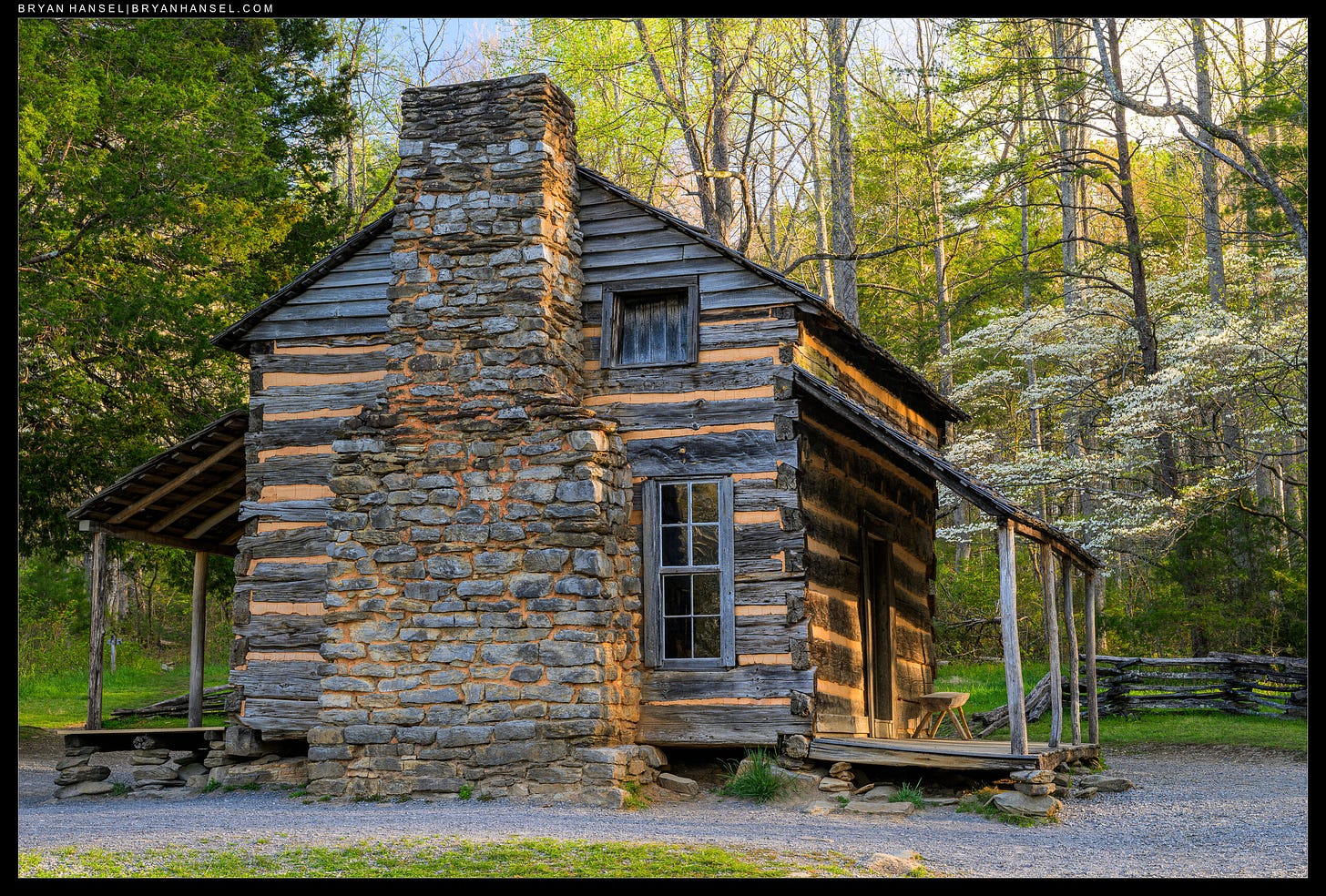

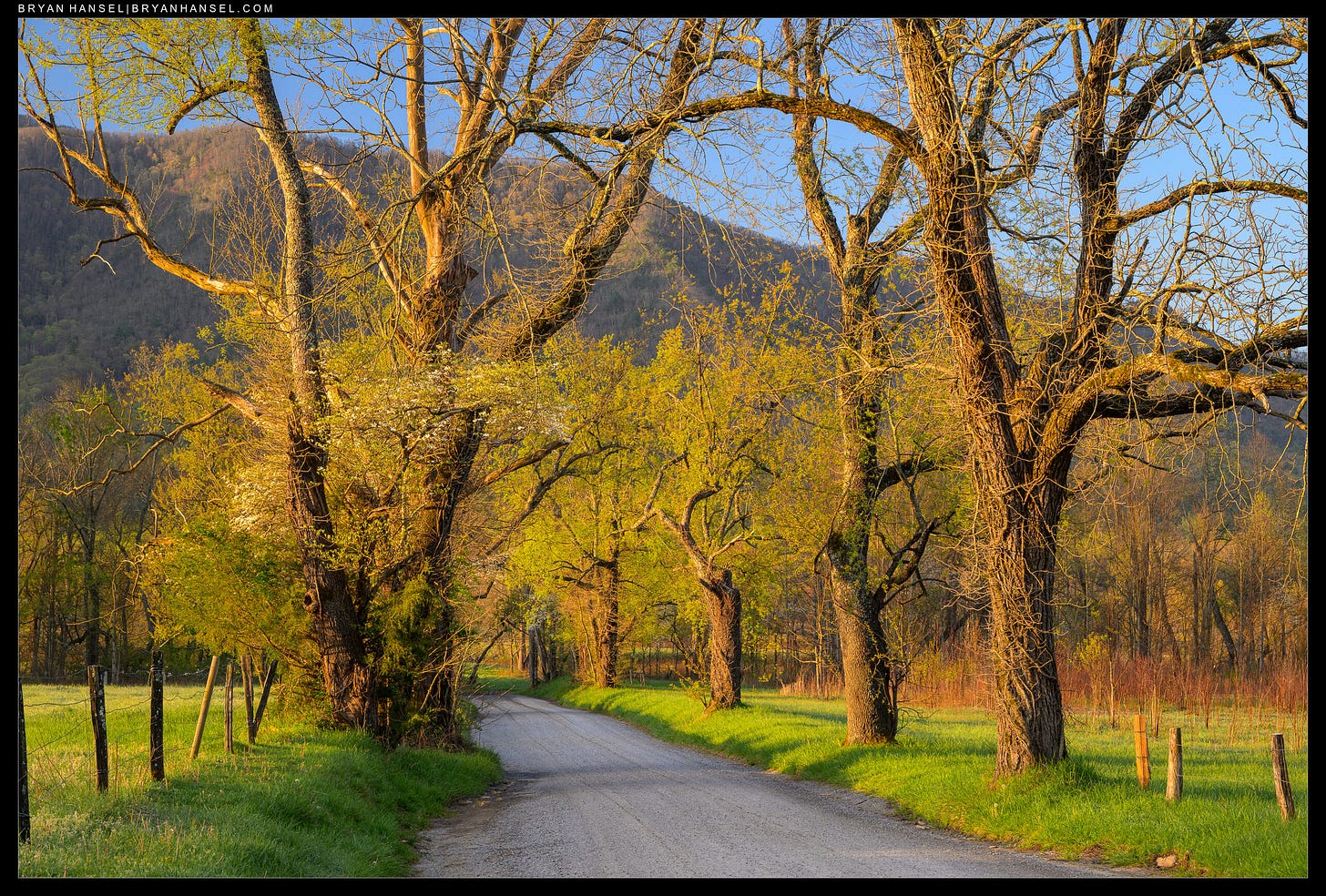

Count me in for 2027
I really enjoyed the photos and narrative about each one. The Smokey mountains are definitely on my bucket list. Thanks for sharing this beautiful workshop recap.